
South Africa’s transformation targets have been a constant source of controversy since they were first implemented at the provincial level two decades ago. Championed by some and derided by many, the issue of racial quotas in cricket teams has been a divisive and emotive issue over the years.
It can be easy to justify the existence of quotas as an attempt to wrong the injustices of the past. Under apartheid, all-white teams represented South Africa at the international level, with the majority non-white population strictly barred from national selection in sports such as cricket, rugby, hockey and netball.
However, much has changed over the course of the last two or three decades. Since the end of apartheid, more and more players of colour have made their way into the national team.
The likes of Makhaya Ntini, Herschelle Gibbs, Hashim Amla, Imran Tahir, Vernon Philander and Kagiso Rabada have excelled; however, the selections of others such as Temba Bavuma and Farhaan Behardien have generated heated debate and controversy.
The negative consequences of racial quotas
Many would recall the furore accompanying Kyle Abbott’s exclusion from the 2015 World Cup semi-final squad in favour of Vernon Philander, apparently at the behest of Cricket South Africa (CSA) President Haroon Lorgat. The fact that Abbott was dropped despite taking nine wickets at an average of 14.44 added further fuel to the fire.
In his book Crossing the Boundary, Kevin Pietersen stated candidly that he was left out of the KwaZulu Natal team due to the unofficial racial quota policy. And that was the primary reason why he left South Africa to seek a career in England.
"I was dropped because the quota system was brought into South African cricket to positively discriminate in favour of 'players of colour'. To me, every single person in this world needs to be treated exactly the same, and that should have included me as a promising 20-year-old cricketer," said Kevin Pietersen.

Similarly, Simon Harmer packed his bags for England after signing a Kolpak contract with Essex in 2017. As per Harmer, his move had everything to do with the quota system and not financial rewards. He said in this regard:
"There's obviously been quite a few guys that have signed (Kolpak deals) and have been seen as the 'black sheep' of South African cricket. A lot of the media attention has been about how lucrative it is. I don't think that's necessarily the case. I think it's more about fair competition and playing for eleven spots in the team because I think currently, you're playing for five spots."

Over the last three seasons, Harmer has become one of the leading bowlers in the County Championship, with 246 wickets at an average of 19.34.
South Africa's timeline of 'transformation'
The debate over quotas has only intensified further after Cricket South Africa (CSA) made the transformation policy official in 2014.
To examine the use of quotas closely, I have created a brief timeline of their progression. The figures for 2021 – 2022 are projections based on CSA's latest report.
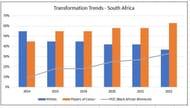
As the graph demonstrates, the new targets show that the number of team spots afforded to white players is set to decrease markedly, while the ‘players of colour’ and ‘Black African’ quotas are expected to increase during the same period. From 2022 onwards, the South African cricket management will only be able to field four white players on average in the starting XI per season.
A brief glance down the run-scorer charts in domestic South African Four-Day and One Day Cup competitions reveal that the majority of leading players are still white. Despite outperforming their counterparts, many domestic white cricketers will never get to play for the South African national team due to the quota policies in place. The fact that the bowling records are not too different is equally problematic.
And that’s not all. CSA’s transformation policy dictates that from 2022 onwards, national coaching consultant jobs will be allocated to 60% Black African and 40% people of colour, effectively freezing the white demographic out of cricket coaching and administration.
While recently, the interim CSA board decided to temporarily suspend new transformation targets, an aggressive transformation strategy definitely remains part of the organisation's long-term agenda.
Hearing from players who have left
To get a feel of what transformation means to cricketers, I reached out to get their perspectives. The following is a collection of thoughts gathered from several current and ex-players, many of whom are now playing cricket for other nations.
Brandon Glover
A product of St Stithians College in Johannesburg, Brandon Glover is a talented 23-year-old fast bowler who grew up playing school cricket alongside the likes of Kagiso Rabada.
He represented Netherlands at the ICC Men’s T20 World Cup Qualifier in 2019, touching speeds of 145 kmh (90 mph) and finishing as the second highest wicket-taker. His impressive performance helped him pick up a county contract with Northamptonshire.

As Glover notes, a big reason why he left South Africa to play for the Netherlands was a lack of opportunity. He said in this regard:
"I was only getting a handful of first-class games a year in South Africa and felt like my cricket wasn’t really taking off. Obviously fighting for a few spaces in a team does make it that little more difficult. Boland also said they were not going to renew my contract for the next season for unspecified reasons, so it really was a no-brainer."
Glover possesses a Netherlands passport courtesy of his Dutch heritage, which helped him to make the Dutch squad straightaway, bypassing the three-year residency criteria. He is happy knowing that from now on, his selection will be based solely on performance and tactics rather than politics.
"I believe that you should always play your best team, especially at international level. In South Africa, it has come to a point where often your race can be more decisive than your skill in selection. Often players who are not as good as others are put ahead due to political factors. The focus should instead be on developing players properly, especially at the grassroot level," opined Glover.

With CSA set to ramp up transformation targets even further, Glover sees the trend of white players leaving South Africa continuing in even greater numbers.
"If you are struggling to play cricket for a living in South Afric, and various other options open up overseas that look promising and rewarding, naturally you are going to take them. There is a big trend right now of young South African-born cricketers who are very skilled but are simply not getting the deserved opportunities. These guys are all leaving overseas thanks to either ancestral visas or foreign passports to the UK or Europe (for example, Ireland or The Netherlands), as the prospects of playing are potentially higher," Glover said.
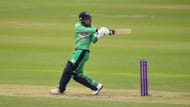
"Cricket is rising in Europe and other Associate nations at a rapid pace. The USA is also developing its cricket and look to be doing big things. Players are going to want to get involved in this if they are not playing back in South Africa with very limited spots for them available in a team," Glover added.
Kobus Olivier
Kobus Olivier is an ex-South African professional player and a self-described cricketing nomad who has been involved with cricket development for the last 30 years.
According to Olivier, the problems are exacerbated due to South Africa’s overreliance on the posh private schools network to find talented cricketers. It means that access to top facilities is not available to all, and quotas will do little to fix that issue.
"The quota system starts from school-boy level. Young white cricketers are only allowed five spots in the team at the U-13, U-15, U-17 and U-19 levels. With only five spots available, many white kids simply give up on cricket and move to individual sports. It gets even worse from there. The school kids then go on to play representative cricket where once again only five white players from all these private schools can play," said Olivier.

Olivier is worried about the escalating political interference in cricket affairs and paints a grim picture for white cricketers in South Africa in the future.
"There is absolutely no future for a young white South African cricketer now. From school-boy level, the message that is conveyed is that if you are white, it is going to be almost impossible for you to play representative cricket," said Olivier.
He continued in this regard:
"So for the young white players that are trying to break into the national team now, I can guarantee you that almost all are going to leave. The American professional league (MLC) that they are setting up is going to be an absolute honey pot for them. Playing in USA, making good money, earning dollars compared to the South African Rand; every young kid with half a chance will want to move and play there."
South African Cricketers Group
The collective response from the South African Cricketers group, which features several famous ex-cricketers, was even more dire. Acknowledging the issue’s complexity, many stressed that CSA have been completely negligent in their duty to broaden the game’s appeal.
According to them, CSA have also failed to invest in grassroots development in underprivileged areas. Instead, racial quotas have been introduced to paper over the cracks and to satisfy the ruling African National Congress' (ANC's) racially-charged political narratives.
As a result, many white players see themselves as second-class citizens in the system and therefore, have become solely focused on moving overseas to continue their cricketing development. That has had a snowball effect.
As more and more players leave, it leads directly to a massive decline in quality at the semi-professional and provincial levels, further hollowing out the talent pool in South African cricket.
Others in the group told me that they feel alienated and worry about cricket losing its relevance as an attractive leisure option for future generations due to the overt politicisation of the game.
Another anonymous source informed me that many parents choose not to speak up about quotas at the school level even if they disagree with its use. They just don't want to jeopardise their children's future cricket career by invoking the wrath of the system, which is vindictive towards those who dare to do so.
These events have even caused AFriForum (an Afrikaner civil rights group) to sit up and take notice. Recently, it submitted a report to the ICC, highlighting the political interference taking place in South African cricket. Amongst other recommendations, the report requested the ICC to place sanctions on CSA unless it rescinds their quota policies immediately.
Nikolai Smith

Nikolai Smith is a former Cape Town native who has been based in Ireland for the last seven years.
The opening batter plays for Italy at the international level because he holds an Italian passport but is also eligible to represent Ireland, having played for the Irish inter-provincial team Northern Knights since 2013.
"Right now, I’ve only been to one tournament with Italy and loved it. They have a great passion for the game and really want to grow it in Italy and Europe. It is something I would love to be part of. I am also qualified to play for Ireland. So I definitely wouldn’t turn down any opportunities for Ireland either," said Smith.
On the topic of transformation, Smith acknowledges the need for diversity in South African cricket but is firmly against the use of quotas. He said in this regard:
"I feel that the transformation policies are needed to encourage a more diverse population of cricketers in the country but at the higher levels, the best should play."
Chris Cardoso
The above sentiment is also echoed by The Sporting Agents & Consultants company CEO Chris Cardoso.
The Pretoria-based agency made headlines earlier this year for their role in snapping up Major League Cricket deals for ex South African cricketers Willem Ludick and Carni Le Roux.
Speaking to me, Cardoso outlined his agency's philosophy:
"My first priority is the players and their careers. No matter who we sign, we want them playing the sport they are employing us to assist them in, at the highest level. I would sign guys from all over the world and look for jobs for them anywhere, regardless of where it is."
The wrong solution to the right problem?
My investigation and player feedback reveal that the overwhelming response to quota implementation in South African cricket has been quite negative.
It’s apparent that fighting historical discrimination with newer forms of discrimination is not the answer. It is fomenting needless conflict and racial resentment among players.
Furthermore, by limiting opportunities to white cricketers, aggressive transformation targets are causing an exodus of talented white players to leave South African shores (see table below) and seek opportunities elsewhere.
It is tough to brand these players as opportunists or mercenaries, when in most instances, they are making the move for developmental or financial security reasons.
The South African cricket board needs to instead focus on developing infrastructure in black majority areas to facilitate talent growth.
Of course, all this is easier said than done. Continual mismanagement at the board level has mired the CSA in perpetual financial strife over the last few years. Add COVID-19 on top, and the board’s future prospects look gloomy.
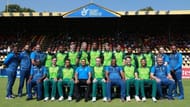
This is why, I wholeheartedly disagree with the notion that Brexit is the silver bullet to stopping the South African player drain.
Closing the Kolpak loophole will merely re-direct player migration away from England to other nations. With significant investment happening in the USA with Major League Cricket and European cricket growing in strength, it is quite likely that we will see a tidal wave of white South African players turning up to play for the likes of USA, Ireland, Scotland, Netherlands and even Australia or New Zealand in the future instead.
South African-born cricketers currently playing overseas
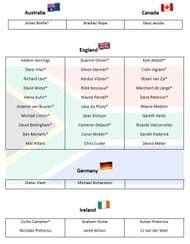
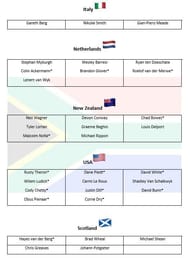
Note: The above table includes players who have played their foundational or underage cricket in South Africa before migrating overseas. So players who moved at a very young age such as Marnus Labuschagne and Jason Roy have been excluded. The asterisk* denotes players with U-19, South Africa A, South Africa Emerging and South Africa Senior Men’s team caps.
Looking for fast live cricket scores? Download CricRocket and get fast score updates, top-notch commentary in-depth match stats & much more! 🚀☄️
